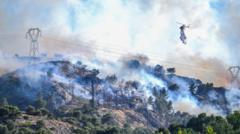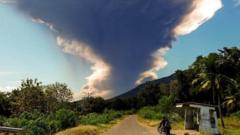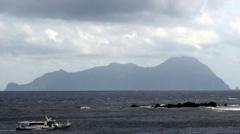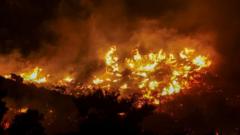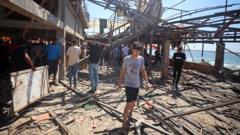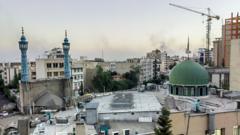An ongoing volcanic eruption in Iceland's Reykjanes Peninsula has led to a mass evacuation of the fishing town Grindavik, as residents fear for their safety amid ongoing seismic activity.
Volcano Erupts in Iceland, Prompting Evacuations in Grindavik
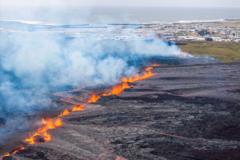
Volcano Erupts in Iceland, Prompting Evacuations in Grindavik
Residents and tourists flee as lava spews from new fissures and earthquakes rattle the area.
Tourists and residents are currently facing urgent evacuations as a volcano erupted in south-west Iceland, posing a significant threat to the town of Grindavik and the renowned Blue Lagoon spa. The eruption, which began early in the morning, has unleashed vibrant flows of molten lava, prompting the formation of a sizable crack extending 1.2 kilometers (0.75 miles) long in the surrounding terrain. Throughout the day, the area has experienced multiple earthquakes, heightening concerns among the local population.
Grindavik, a fishing town with a population of approximately 4,000, has seen protective barriers breach as a new fissure emerged just a few hundred meters away from the town. Asrun Kristinsdottir, a longtime resident and president of the town council, noted the unusual intensity of the seismic activity this time, prompting her and many others to heed emergency sirens and evacuate promptly.
Despite official orders to evacuate, a handful of residents opted to stay behind, with some stating their desire to remain in their homes. Ulfar Ludviksson, the police commissioner for the region, confirmed that about seven or eight households chose to ignore evacuation protocols, expressing reluctance to leave their familiar surroundings. Meanwhile, risks to the town's safety remain heightened, with experts noting the potential for lava flows to encroach into residential areas.
Local businesses have been severely affected, as highlighted by Thormar Omarrson, who runs a pizza restaurant in Grindavik. After living in the town for three decades, he evacuated with his family following warnings of potential volcanic threats. Omarrson described the decision as deeply disheartening, having to leave behind a community which his family cherished.
The Icelandic Meteorological Office reported a temporary decrease in volcanic activity during the early afternoon on Tuesday but confirmed ongoing dangers, particularly concerning gas emissions from the eruption due to wind direction potentially affecting the capital region. The recent seismic activity is part of a series of eruptions that have taken place on the Reykjanes Peninsula, marking a notable resurgence in volcanic activity since 2021, reminiscent of historical eruptions that occurred over the span of centuries.
Officials continue to monitor the situation closely, underscoring the importance of community safety in the face of the country's dynamic geological landscape, punctuated by its 33 active volcanic systems sitting along the Mid-Atlantic Ridge.
Grindavik, a fishing town with a population of approximately 4,000, has seen protective barriers breach as a new fissure emerged just a few hundred meters away from the town. Asrun Kristinsdottir, a longtime resident and president of the town council, noted the unusual intensity of the seismic activity this time, prompting her and many others to heed emergency sirens and evacuate promptly.
Despite official orders to evacuate, a handful of residents opted to stay behind, with some stating their desire to remain in their homes. Ulfar Ludviksson, the police commissioner for the region, confirmed that about seven or eight households chose to ignore evacuation protocols, expressing reluctance to leave their familiar surroundings. Meanwhile, risks to the town's safety remain heightened, with experts noting the potential for lava flows to encroach into residential areas.
Local businesses have been severely affected, as highlighted by Thormar Omarrson, who runs a pizza restaurant in Grindavik. After living in the town for three decades, he evacuated with his family following warnings of potential volcanic threats. Omarrson described the decision as deeply disheartening, having to leave behind a community which his family cherished.
The Icelandic Meteorological Office reported a temporary decrease in volcanic activity during the early afternoon on Tuesday but confirmed ongoing dangers, particularly concerning gas emissions from the eruption due to wind direction potentially affecting the capital region. The recent seismic activity is part of a series of eruptions that have taken place on the Reykjanes Peninsula, marking a notable resurgence in volcanic activity since 2021, reminiscent of historical eruptions that occurred over the span of centuries.
Officials continue to monitor the situation closely, underscoring the importance of community safety in the face of the country's dynamic geological landscape, punctuated by its 33 active volcanic systems sitting along the Mid-Atlantic Ridge.




